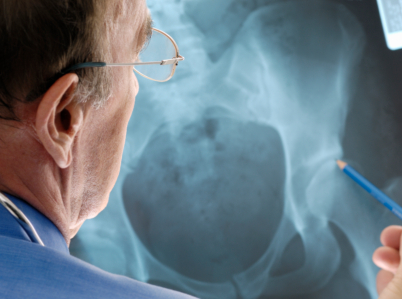Dear Savvy Senior,
Can a person in their early 50s have osteoporosis? When I fell and broke my wrist last winter the doctor that treated me told me I might have osteoporosis. What can you tell me?
-- Worried Ronda
Dear Ronda,
While osteoporosis is much more common in older seniors, it can strike at any age. In fact, the National Osteoporosis Foundation estimates that half of women and up to 25 percent of men in the U.S. over the age of 50 will break a bone due to osteoporosis. Here's what you should know.
Who's at Risk?
Osteoporosis is a disease that causes the bones to become brittle and weak and more susceptible to fractures. Around 10 million Americans already have osteoporosis (80 percent are women) while another 43 million have "pre-osteoporosis," or osteopenia. But the good news is this disease is both preventable and treatable.
Most people, by the time they reach their late 30s, gradually start losing some of their bone mass, but for women, menopause is the time when this process really accelerates. Bone loss for men occurs much more slowly. However, by age 75, osteoporosis is as common in men as it is in women.
Some of the key risk factors of developing osteoporosis include: being over age 50; being female; menopause; having a family history of the disease; being small and thin; having an eating disorder; not getting enough calcium and vitamin D; getting too much protein, sodium and caffeine; having an inactive lifestyle; smoking; drinking too much alcohol; taking certain medications; and having certain medical condition.
To help you determine your risk of osteoporosis, the National Institutes of Health has a quick, online quiz you can take at bonecheckup.org.
Prevention and Treatment
A good first step in preventing and treating osteoporosis is to get screened. For women, that should start around menopause, especially if you're not taking estrogen, or anyone who has broken a bone after age 50 or who has other risk factors.
All women over 65 and men over 70 should be tested every two years -- Medicare covers it. Screening for osteoporosis is a simple, painless, bone density test, which takes about five minutes.
Here's what else you can do to protect your bones.
Boost your calcium: The best way to get bone-building calcium is through your diet. Dairy products (low-fat milk, cheeses and yogurt), dark green leafy vegetables (broccoli, kale, collards), sardines and salmon, cooked dried beans, soy foods, almonds and fortified cereals and juices are all good sources of calcium. Vitamin D is also important to help you body absorb calcium.
The National Osteoporosis Foundation recommends 1,000 mg of calcium daily for women under age 50 and for men under 70, and 1,200 mg for women 51 and older and for men over 71. Note: Recent studies have found that excess calcium could increase the risk of heart disease.
They also recommend all adults under age 50 get 400 to 800 IU of vitamin D, or 800 to 1,000 IU if you're over 50. If you're not getting enough vitamin D through sunlight or food, consider taking a supplement. Most daily multivitamins contain at least 400 IU.
Exercise: Weight-bearing exercises like walking, and strength training with weights or resistant bands three or four times a week can also significantly improve your bone health.
Control these vices: Avoid smoking, limit alcohol to no more than two or three drinks per day, and limit caffeine (coffee, tea or caffeinated soda) to three cups a day.
Consider medications: The most widely prescribed for osteoporosis are bisphosphonates, a class of drugs designed to slow or stop bone loss. Talk to your doctor about these and other medication options, as well as potential side effects.
Send your senior questions to: Savvy Senior, P.O. Box 5443, Norman, OK 73070, or visit SavvySenior.org. Jim Miller is a contributor to the NBC Today show and author of "The Savvy Senior" book.

